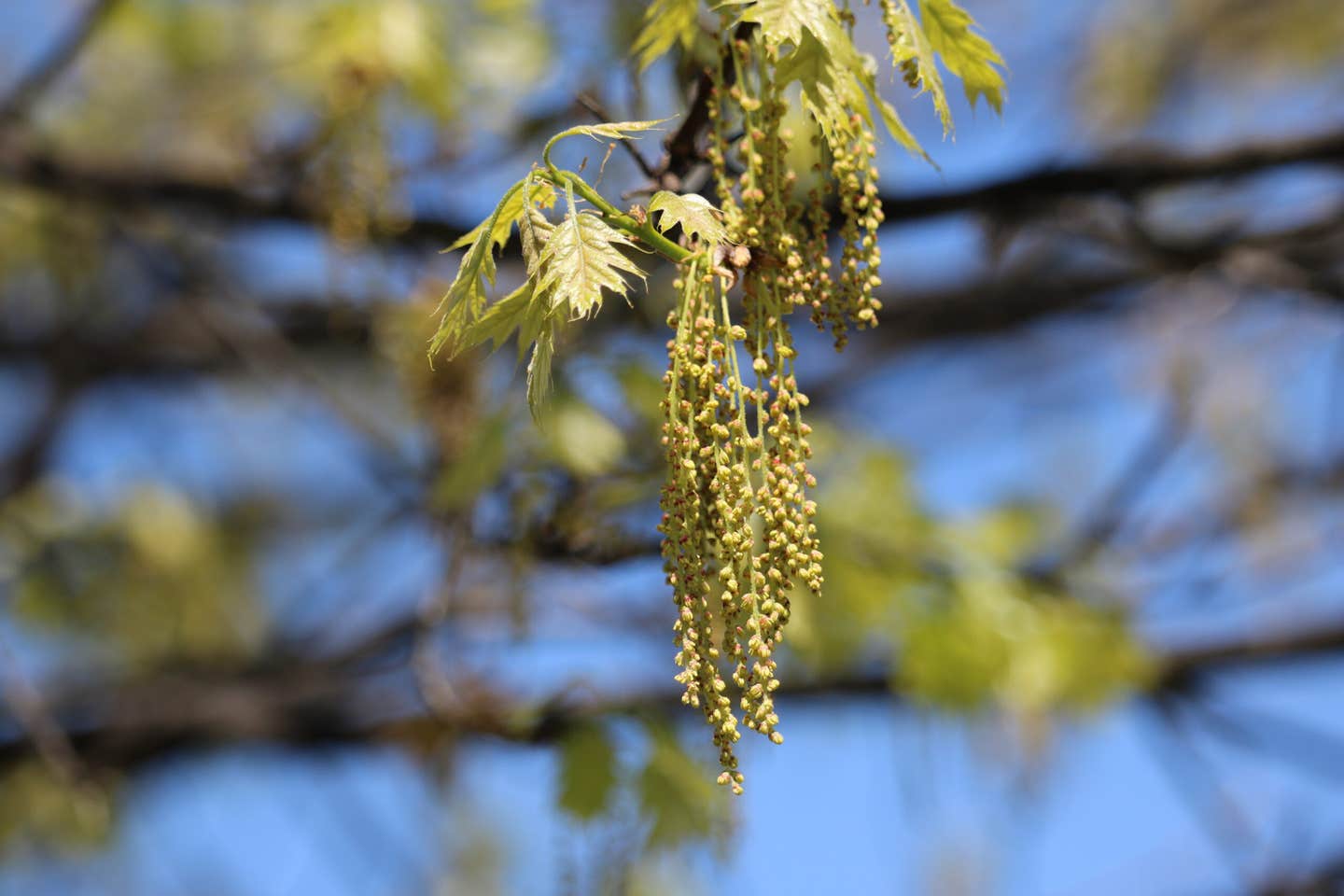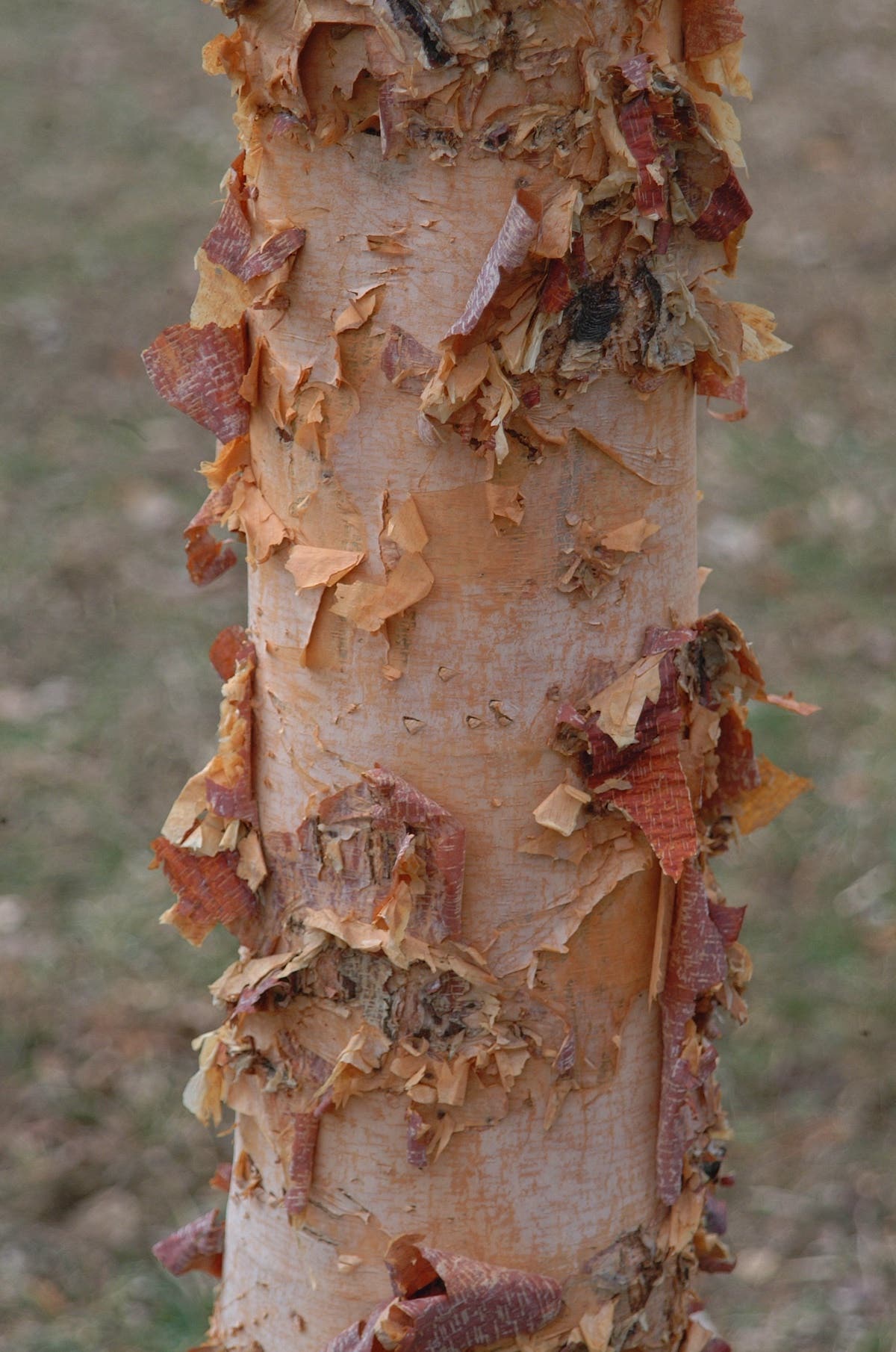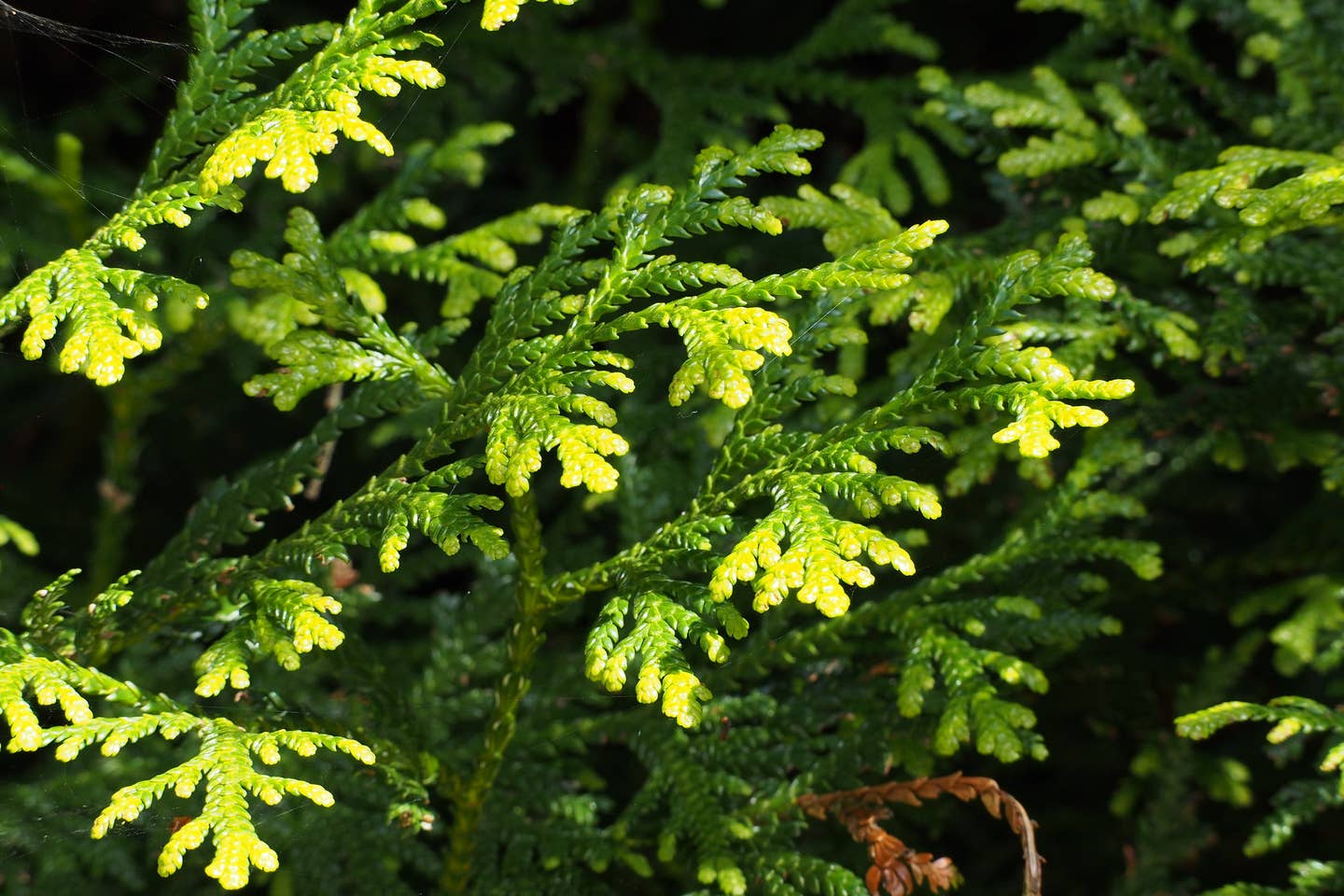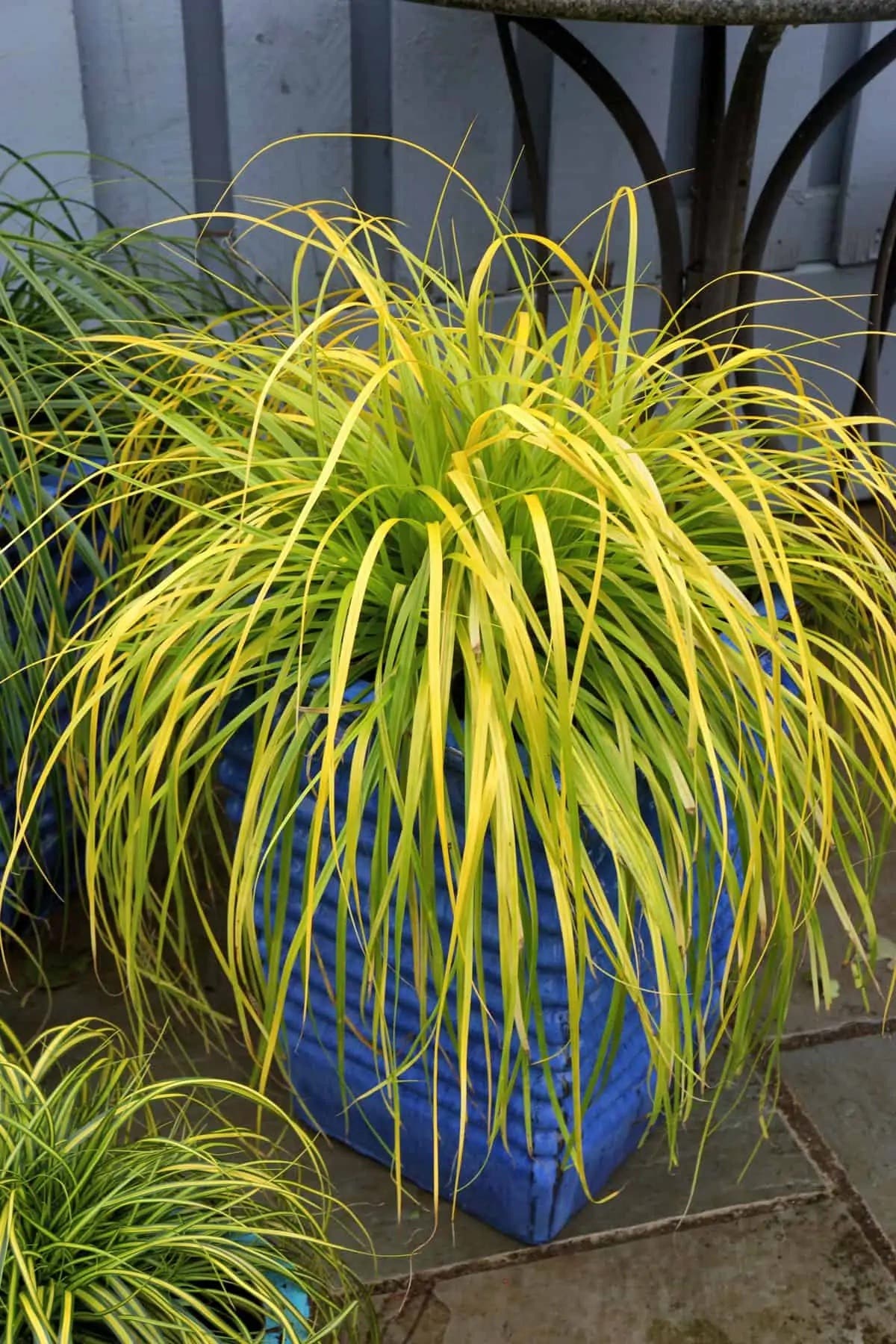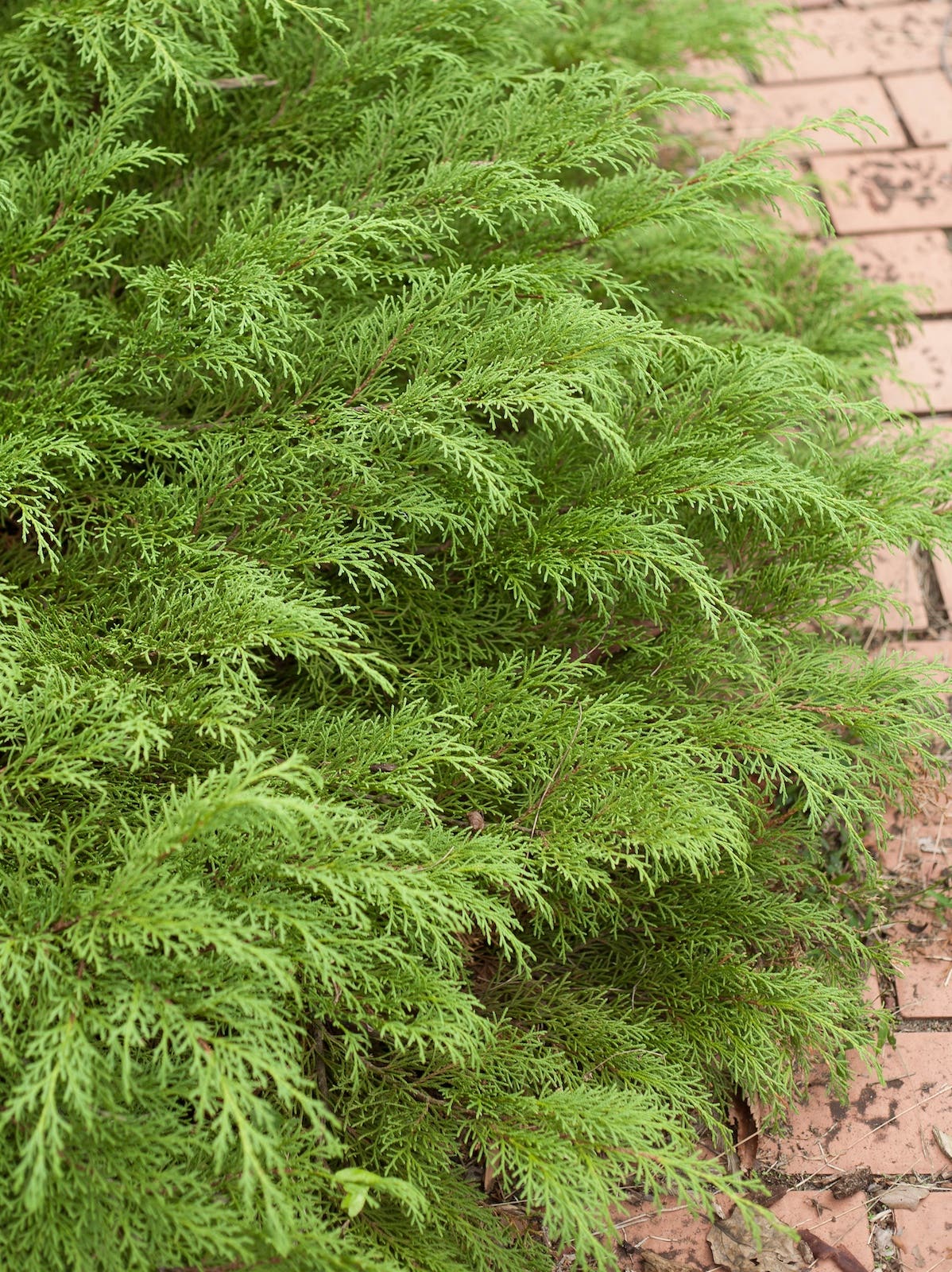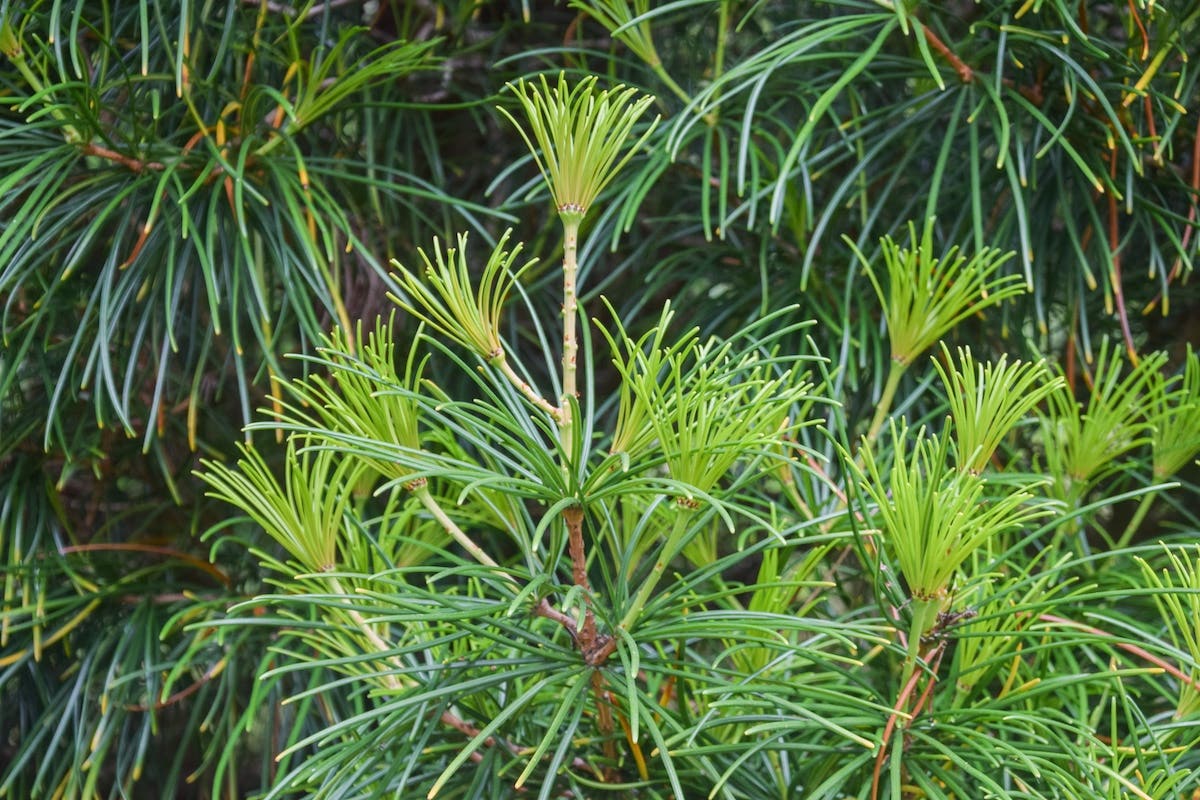Himalayan white pine, or Pinus wallichiana, is a striking tree that contributes beauty to the garden year-round, but it’s especially appreciated in winter. And why not a featured evergreen? When the leaves have fallen and the deciduous trees stand bare, when the sky is the color of a lead pipe and the ground is cold and hard, there stands the evergreen conifer, its hues enhanced by cold temperatures and the absence of color around it. It carries the promise of warm green days to come.
Other common names of this pine are Bhutan pine, Himalayan white pine and blue pine —among several others. The “blue” refers to the bluish cast of the needles, especially apparent in the subspecies ‘Nana.’
The species name “wallichiana” refers to Nathaniel Wallich (1786–1854), a Danish botanist and surgeon who worked in northern India and introduced the seeds of this striking pine to England in 1827. Nine years later, the seeds had grown out into young trees that were released into the nursery trade. Their offspring have since become a favorite specimen evergreen around the world.
Growing Himalayan White Pine
Put simply, this pine prefers temperate climates, with dry winters and wet summers. Once established, it’s drought tolerant and low maintenance.
Himalayan white pine’s typical natural habitats are mountains and forestlands once covered in glaciers, where it inhabits old-growth forests as the dominant species or mixes company with deodar cedars, birches, spruce and firs. Picture the majestic snowy peaks of the Himalayan mountains, with altitudes where the big jets fly. Below them are the cold, elevated hills and valleys where our specimen naturally grows.
Having evolved on slopes, it likes well-drained soil, although it isn’t particularly picky about soil type. Loamy, chalky, sandy soils all suit it fine. It likes a spot by itself so it gets full sun, making it perfect as a stand-out by itself in a landscape here in North America.
East of the Rockies it’s cold hardy in USDA Zones 5 to 7. Out West, it thrives in Sunset Zones 15 to 17 and elevated stretches of the foothills of the Sierra. Across the Atlantic, it grows well throughout the British Isles and northern Europe. In the wild, it can grow to 150 feet tall, but in landscape and garden situations, it usually reaches between 50 and 70 feet at maturity. Full growth is a slow process and can take many decades before it reaches its full height.
Two subspecies may be most valuable in small landscapes or gardens. Pinus w. ‘Nana’ grows to about eight to ten feet over many years, with a blue cast to its needles. It has earned the English Royal Horticultural Society’s Award of Merit. Pinus w. ‘Zebrina’ is a slow-growing dwarf that hits six feet after ten years. Its thin needles, green with golden bands, stretch six to eight inches long and, like the others of this species, occur in bundles of five. The needles grow in downward clusters, giving the tree a cascading effect, like a green waterfall.
Himalayan pine’s branches often reach to the ground, and its flexible needles highlight its gracefulness. When cones form, they are 8- to 12-inch slender tubes with thin scales and a yellow-buff color as they mature, adding to the tree’s visual interest.
Even in winter—and maybe especially in winter—its cascading effect remains noticeable in the species as well as its subspecies. This prompted plant specialist Michael Dirr to call it “an elegant pine, considered by some the most beautiful pine species…Its only use should be as a specimen.”
Related: “Conifers for Gardens: Our Top 11”
Its high resistance to air pollution as well as its year-round beauty makes it a popular tree for planting in city parks and arboreta, where, of course, a variety of birds and squirrels find its seeds to be mealtime fare. But as with most resinous pines, deer don’t like it. We can be grateful for that, and for Wallich and Griffith who brought the tree to the world’s attention, and to Pinus wallichiana itself for its self-made beauty.
Image credit: By Ryan Somma/CC BY 2.0/Flickr.com


